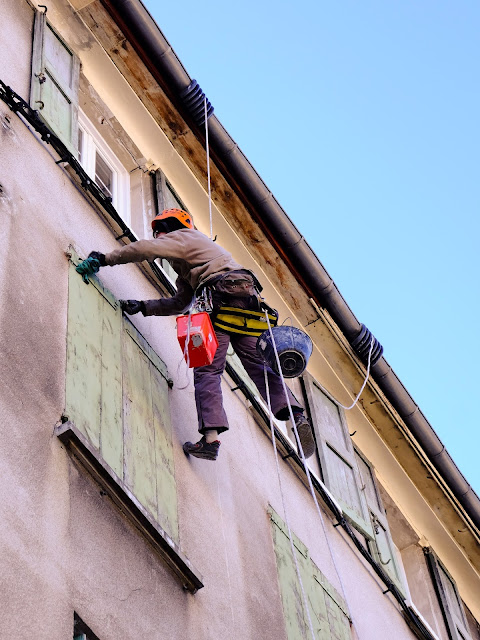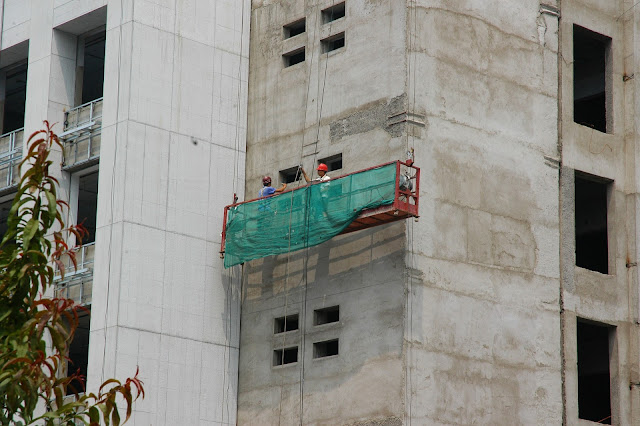💡Table of Contents
- Introduction: The Importance of Identifying Structural Damage
- What is Structural Damage and Why Should You Care?
- Detecting Structural Damage in Floors and Walls
- What to Do if You Suspect Structural Damage
- FAQs: Common Questions About Structural Damage
- Conclusion: Protecting Your Home and Family from Structural Damage
Introduction: The Importance of Identifying Structural Damage
As a homeowner, it is important to be aware of the warning signs of structural damage in your home. If left unchecked, structural damage can cause significant financial harm and can even be life-threatening.
Structural damage to your home can come from a wide array of causes. It can be caused by earthquakes, floods, high winds, or other natural disasters. It can also occur from age or neglect and deterioration over time. No matter what the cause, it is important to pay attention to any signs of potential structural issues and take steps to address them as soon as possible.
In this blog, we will discuss five tell-tale warning signs of structural damage in your home. We will provide tips for detecting these signs and advice on when you should call in professionals for further evaluation and repairs if necessary.
What is Structural Damage and Why Should You Care?
Structural damage is any type of damage that affects the structural integrity of your home. It can be caused by age, weather, poor workmanship, poor building materials, and other factors. Taking steps to repair this damage is essential to protecting the safety of your home and preserving its value.
When it comes to identifying structural damage in your home, there are a few warning signs to watch for. These include:
- Cracks or gaps in walls or ceilings: Cracks or gaps may indicate the settling of the foundation or weakening of the frame and walls due to water damage or wear and tear.
- Doors and windows not opening or closing properly: This can be a sign that walls or flooring have shifted due to settling or other structural issues.
- Floors “sinking” or becoming uneven: These irregularities may indicate a shifting foundation, especially if you’ve noticed them in all rooms of the house.
- Loose, cracked tiles in the bathroom/kitchen areas: Loose tiles can be a sign of water seepage which could cause problems down the line if left unaddressed.
- Bowed walls: Signs such as bowed walls could indicate inadequate support which would need to be fixed before any further problems occur.
Understanding these warning signs is key when it comes to maintaining your home’s structural integrity. If you see any signs of potential structural damage in your home, have it inspected immediately by a professional for safekeeping?
 |
| Image by Grégory ROOSE from Pixabay |
Signs of Foundation Problems
Foundation problems are perhaps the most common sign of structural damage in your home. It’s important to recognize the signs of a faulty foundation so you can get ahead of potential problems before they become major issues.
Warning signs that your home may have foundational issues include:
- Cracks in walls and floors
- Doors and windows that no longer open and close properly
- Structural leaning (usually seen in chimneys or walls)
- Uneven floors
- Sticking doors or windows
- Wallpaper being pulled away from the wall
- Interior wall cracks
- Gaps between walls, floors, and ceiling.
Finding these warning signs early can help you fix the problem before it gets worse. If you notice any of the above damage, it’s important to call a structural engineer right away to help diagnose the issue and determine if repairs are necessary.
Signs of Roof Problems
When it comes to your home, an issue with the roof can be a sign of larger structural damage. There are several warning signs to look out for that may indicate a problem, such as:
Sagging or Leaks
Sagging is a tell-tale sign that something is wrong with the roof and could be a symptom of a more severe issue. Additionally, if you have any leaks in your home, that could also be an indication of roof problems. It is important to address these issues as soon as possible to prevent further damage caused by moisture infiltration.
Visible Damage
You may not always need to climb up on your roof to detect damage. If you look closely at your home’s exterior, you might be able to spot nail pops, warped shingles, or other visible signs of damage. If you do see any damage on the exterior, it’s important to contact a professional for further inspection.
Unusual Noises
If you’re hearing strange noises coming from above—whether it’s tapping or creaking noises—it could be an indication that there is something wrong with the structure of your roof. Have an expert come and take a look so they can determine the source and recommend a course of action for repair and/or replacement if necessary.
Warning Signs of Window and Door Issues
Windows and doors form a major part of the structure of your home. Issues including warping, cracking, and sagging are all signs that it might be time to replace them.
It’s important to inspect these features regularly and look out for any signs of structural damage. Here are some warning signs you should watch out for:
- Difficulty opening or closing windows or doors
- Warping in the frame
- Cracks in the glass or frame
- Sagging door frames indicate that the house is settling unevenly
- Gaps between windows or doors and their frames
- Drafts around windows or doors
If you notice any of these warning signs, it may be time to consider replacing them to preserve the structural integrity of your home. New materials such as precast concrete can help ensure your windows and doors last longer than ever before.
 |
| Image by PublicDomainPictures from Pixabay |
Detecting Structural Damage in Floors and Walls
When it comes to detecting structural damage in your home, your floors and walls can be invaluable indicators. Persistent cracks, bowing walls, and noticeable sagging or uneven surfaces can all be signs of a larger problem that may require more than cosmetic repairs.
Floors: Sagging and Gaps
It’s important to keep an eye out for any changes in your flooring that could indicate a deeper issue. If your floorboards are visibly sagging, or if you notice large gaps between boards or tiles, then it could be a sign of either weakening support beams or settled foundations. Look for any buckling floors or tile shifting which can also suggest damage due to moisture saturation from a leaking pipe or floodwater.
Walls: Bulging and Cracks
The same holds for walls—monitor them for any outward bulging due to a leaning foundation or another issue. Unevenness in the walls’ surfaces is another sign of potential structural damage, as is the presence of noticeable cracks—especially ones that continue to spread over time. If you notice any of these issues with your walls, it’s important to take action and get the problem investigated by an expert before it leads to more serious issues down the road.
What to Do if You Suspect Structural Damage
If you've noticed any of the warning signs mentioned above, it's important to take action right away. The longer you wait, the more damage could be done to your home, leading to higher repair costs down the line.
Here are some steps to take if you suspect structural damage in your home:
- Call in a professional immediately – A qualified inspector or engineer can properly assess and diagnose any structural damage and recommend appropriate repair solutions.
- Don't try to make repairs yourself – Structural issues require expertise and specialized equipment for a safe and lasting repair. Attempting DIY repairs or using inferior materials can worsen the problem and put your home's safety at risk.
- Follow instructions carefully – Once the problem has been identified, make sure to follow the instructions given by your engineer or contractor exactly as directed, as deviation from their plan could also have serious consequences for both your safety and that of your home.
By taking these steps, you can ensure that any structural damage present in your home is properly assessed and repaired as quickly as possible so that you and your family are safe in the long run.
 |
| Image by sailormn34 from Pixabay |
FAQs: Common Questions About Structural Damage
Homeowners should watch out for potential structural damage to ensure their home is safe and sound. Below are some commonly asked questions that can help you understand the signs of structural damage in your home:
What Are Common Warning Signs of Structural Damage?
The most common warning signs of structural damage include:
- Uneven floors
- Cracks in walls or ceilings
- Doors and windows that won’t close properly
- Bowed or sagging walls
- Water damage or mold growth
- Discoloration in walls or ceilings
What Should I Do If I Suspect Structural Damage?
If you suspect structural damage, it's important to act quickly. It's best to contact a professional to come and assess the area, as they'll be able to identify the source of the issue and provide advice on any repairs that may be needed. If you don't take action, the underlying problem could worsen and lead to more serious issues down the line.
Conclusion: Protecting Your Home and Family from Structural Damage
In conclusion, it’s important to look out for the warning signs of structural damage in your home. If left unchecked, it can cause severe damage and cost a lot to repair. Pay attention to the signs, like sagging floors, cracked walls, and doors or windows that don’t fit properly. Regularly check exposed foundations and inspect any remodeling or repair work for signs of structural damage. Act quickly, and work with a certified professional to determine the extent of the damage and to repair or strengthen the structure. Taking early action can help you avoid costly repairs down the road and ensure your, your home, and your family’s safety.








0 Comments